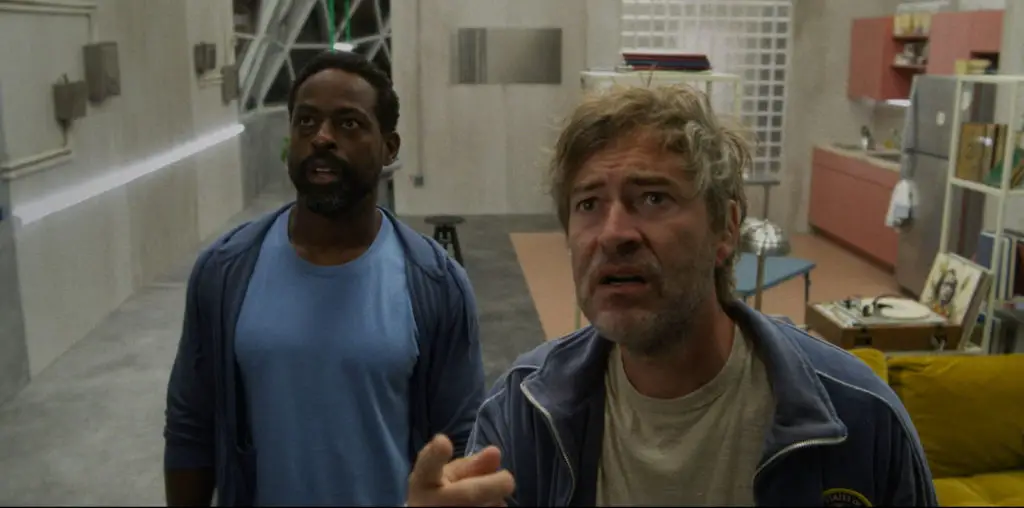
“The Flew” is an experimental feature that tries to raise the bar on surreal artistry but falls considerably short of its worthy goal. It nonetheless deserves credit for trying to present a very different style of filmmaking.
Shot in black-and-white and without dialogue (although muffled voices are heard during the course of the film on the soundtrack), “The Flew” takes place in a seedy 1920s amusement park. The shooting gallery is the center of the attention here as an endless parade of people pay 10 cents to take air shots at two rotating scenes: a pharmacy stocked with bottles ready to fall and the bedroom of a beekeeper named Otto. Unknown to the people paying to shoot, Otto is more than an inanimate life-sized mechanical contraption. It seems that Otto is capable of thoughts and is prone to hallucinations, especially oddball fears of being attacked by a pair of severed hands. Otto is also fascinated by a broken-down funhouse ride across from his gallery and imagines what it would be like to go over and see what it is like.
The film, of course, makes absolutely no sense and it is not helped by Clifton Childree’s performance of Otto, which never gives the impression of a mechanical object who goes through endless repetitions of limited movements (he seems more like a third-rate mime having a bad day). Childree is actually more at home behind the camera (he takes credit for directing, writing, producing, editing and, strangely, photographing the film–the latter is a mystery as he is almost always on the screen). Childree frames “The Flew” with a stylish visual sense that suggests a mix of deteriorating silent movie footage and sinister shadowplay that would make Val Lewton proud. It is a great looking film, to be certain, and it presents a strong argument for making movies in monochrome.
There is much here that cult movie fanatics will recognize as Childree’s inspiration: the bizarre and often Freudian imagery of Luis Buñuel and Maya Deren, the eerie organ music score reminiscent of “Carnival of Souls,” the grotesque hallucinations of “Eraserhead,” and the leisurely creepiness of “Begotten.” Yet the film, like its robot beekeeper, is stuck in a small and none-too-exciting setting which limits the potential of the storyline. The lack of primary characters beyond Otto makes this a one-mechanical-man show, and as with any mechanized creation it eventually grows tiresome after its tricks and ticks become familiar. Had the film run 30 minutes, it would have been memorable. At 90 minutes, however, it wears out its welcome.
If “The Flew” doesn’t fly, it is not for lack of trying. The film shows more imagination and daring by trying to be different from the other films of the indie orbit, and at the very least the proverbial A-for-effort should be awarded here.
